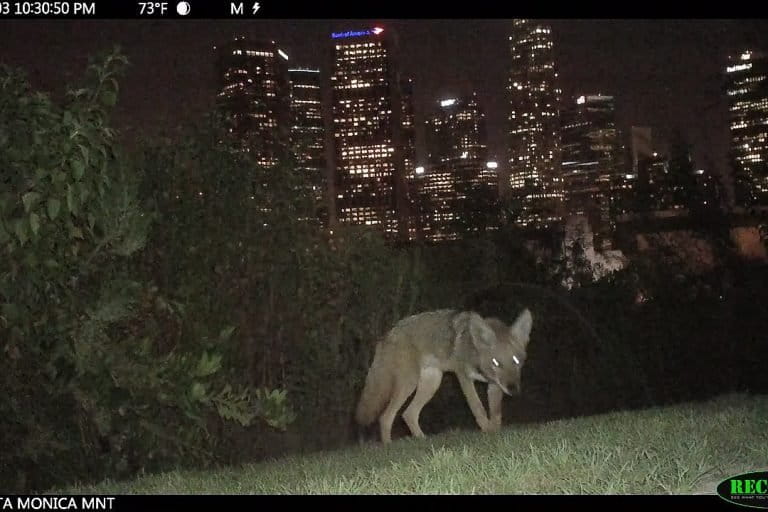- By analyzing 76 studies and activity patterns of 62 mammal species, including bears, deer, coyotes and tigers, researchers have found that large mammals are 1.36 times more active at night in areas with high human presence compared to areas with low human presence.
- These results seemed to be consistent across species and continents.
- Animals seem to be becoming more nocturnal not only to avoid direct threats like hunting, but to avoid even recreational human activities like hiking and mountain biking.
Large mammals are spending more time hunting and foraging under the cover of darkness to avoid humans, a new study has found.
Researchers compiled data from 76 studies, and analyzed activity patterns of 62 mammal species, including bears, deer, coyotes and tigers, to find that wild animals were 1.36 times more active at night in areas with high human presence compared to their counterparts living in areas with low human presence.
Take for example, the sun bear (Helarctos malayanus), a day-loving species that inhabits the tropical forests of Southeast Asia: According to a 1993 study, in areas of Sumatran forests where human traffic was high, sun bears shifted 90 percent of their activity to nighttime, while individuals in areas with low human presence scheduled less than 20 percent of their activities at night.
In fact, in 83 percent of the case studies the researchers looked at, animals showed some increase in night-time activity in response to human presence, the team reports in the study published in Science.
These results seemed to be consistent across species and continents: from red brocket deer (Mazama americana) becoming more nocturnal in the presence of subsistence hunters in Argentina’s Atlantic Forest; to coyotes (Canis latrans) in California, U.S., shifting their activities after dark to avoid hiking humans; sable antelope (Hippotragus niger) in Zimbabwe’s Hwange National Park foraging more at night to avoid hunters; and tigers (Panthera tigris) around Nepal’s Chitwan National Park becoming less active during the day when human activity peaks.
“While we expected to find a trend towards increased wildlife nocturnality around people, we were surprised by the consistency of the results around the world,” lead author Kaitlyn Gaynor, a doctoral student at the University of California, Berkeley, said in a statement.

It’s not just direct threats like hunting making the animals more nocturnal, the study found. Even recreational activities like hiking and mountain biking, or activities like collection of forest produce, agriculture, and development of infrastructure such as roads seem to be inducing shifts in the mammals’ activity schedules.
“Animals responded strongly to all types of human disturbance, regardless of whether people actually posed a direct threat, suggesting that our presence alone is enough to disrupt their natural patterns of behavior,” Gaynor said.
An increasingly nocturnal lifestyle can have some positive effects, the researchers note. For instance, it can allow humans and animals to coexist more peacefully, as has been shown to be the case with tigers and people in Nepal’s Chitwan. But shifts in schedules can also have cascading effects on entire ecological communities that researchers do not yet fully understand. Animals that normally forage during the day in the absence of humans can find it harder to find food at night. Increase in nocturnality among prey species can make them more vulnerable to nocturnal predators, or can even make them seek out human-dominated areas at night to escape nocturnal predators that avoid humans.
However, very few studies have studied the individual-, population- or community-level consequences of the increasing widespread night-time activity, the authors write.
Knowledge of the animals’ temporal activities can also be crucial for conservation planning, the researchers say.
“In areas where threatened species live, managers may consider restricting human activity to certain times of the day, leaving some daylight just for wildlife,” Gaynor wrote in The Conversation. “And it is likely that we need to preserve wilderness areas entirely free of human disturbance to conserve the most vulnerable and sensitive mammal species. Not all animals are willing or able to just switch to a nocturnal lifestyle around people. Those that try to avoid human disturbance entirely may be most vulnerable to the consequences of the expanding human footprint.”

Citation:
Gaynor, K. M., Hojnowski, C. E., Carter, N. H., & Brashares, J. S. (2018). The influence of human disturbance on wildlife nocturnality. Science, 360(6394), 1232-1235.